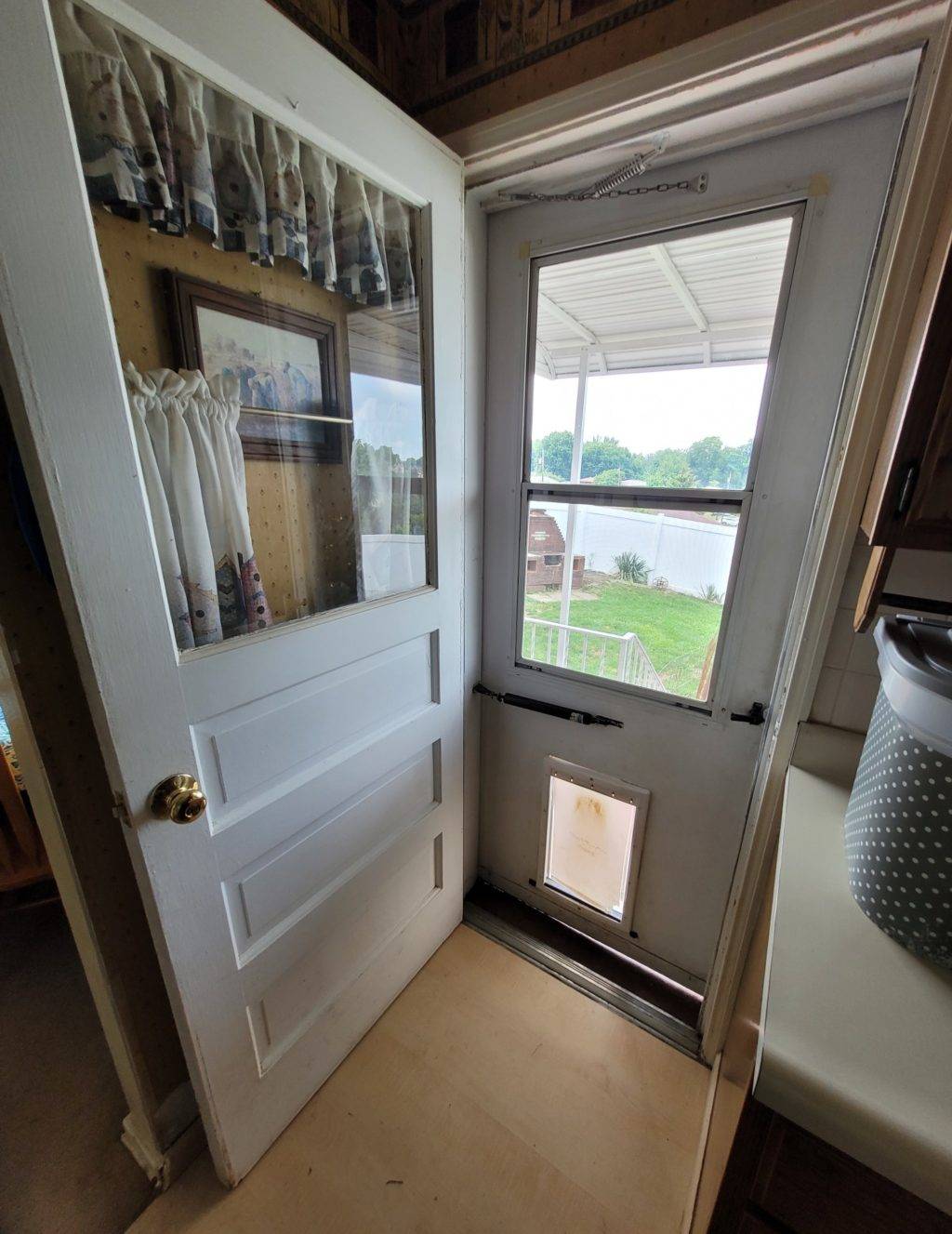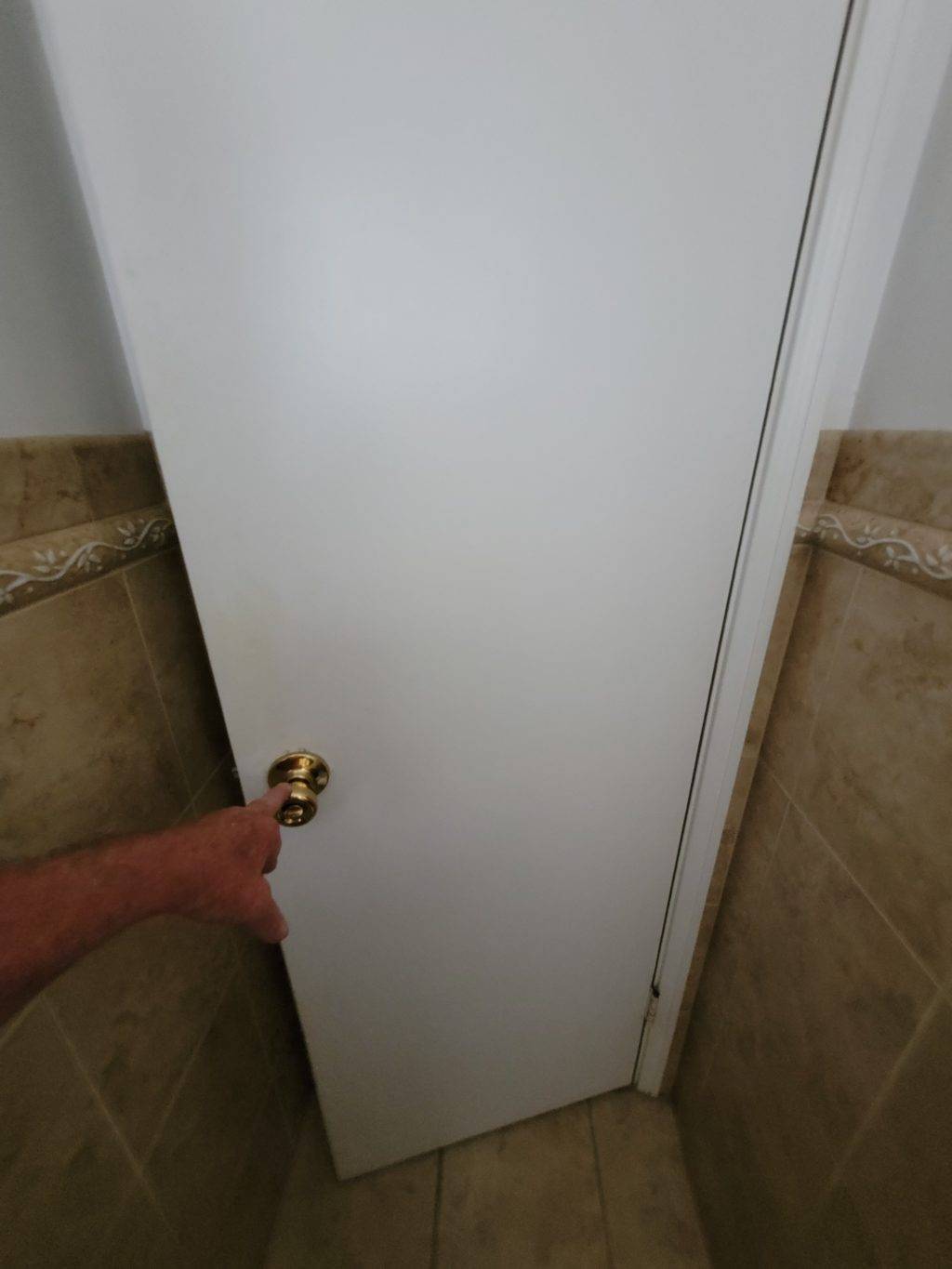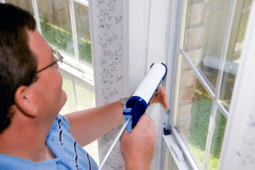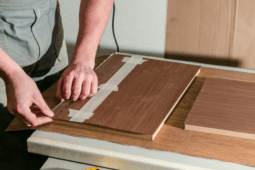How to Determine Door Swing and Handing
In the world of do-it-yourself home improvement, installing a new door is on the easier side of the ledger, but that doesn’t mean it’s not possible to do it wrong. Trust me—if you order a door that’s an inswing when you needed an outswing, you’ll know pretty quickly. That’s why it’s important to understand how to determine door swing and door handing before you buy new doors, so you don’t get stuck with a right-handed inswing when you actually needed a left-hand reverse.

Understanding Door Sizing
Doors come in standard sizes, with easy-to-understand size ratings. A 2-6 door is 30 inches, that is, two feet (2) plus six inches (6.) You add the two feet, ie: 24 inches to the 6 inches and you get a 30-inch door.
You won’t find doors much smaller in modern homes than a 2-6, but if you’re replacing a door on a travel trailer or some older model mobile homes, you might find a 2-0 door on a hot water closet.
The standard entry door is a 3-0, which is three feet, or 36 inches wide. Building codes require outside access doors to be this large at a minimum. A 36-inch door will allow furniture and appliances to fit through them, though they may take a bit of ingenuity in tilting and turning an odd-shaped piece of furniture through the door
How to Determine Door Swing
When determining door swing or door handing (more on that later), the first thing you need to do is make sure you’re standing at the exterior of the door. This can confuse some because if it’s an interior door, how do you know you’re on the “outside” of it? Here’s how: if you’re standing at the garage door of your home about to walk inside, you’re on the outside; if you’re walking from the bedroom into an attached bathroom, you’re on the outside of the door when you’re standing in the bedroom; if you’re standing at the front door of your home, about to walk in, you’re outside.

Once you’re on the outside of the door that you’re replacing, it’s easy from here to determine door swing. If you go to open the door, do you push the door into the room as it opens, or do you pull it towards you? If the door swings into the room when it opens, it’s an inswing. If the door comes out towards you as it opens, it’s an outswing.
The other thing you’ll need to know when buying new doors is the handing of the door.
How to Determine Door Handing
To determine the handing of the door, stand on the outside of it like you did when figuring out if it’s an inswing or an outswing. Look at the hinges. Determine if they’re on the left-hand side of the door frame, or the right side. Whichever side the hinges are on is the handing of the door. So if the hinges are on the left-hand side, it’s a left-handed door, and if the hinges are on the right-hand side, it’s a right-handed door.

An even more straightforward way to determine door handing is to open the door with your right hand. When you open the door, if you can open the door fully without needing to let go of the handle, it’s a right-handed door. If you open the door with your right hand and find you get tangled halfway through because the opening is pulling your hand across your body, it’s a left-handed door.
Combining Door Swing and Door Handing
Once you know whether your door is an inswing or an outswing, and you know the handing, you’ll need to combine the two to place your order. Here’s the basic breakdown:
- If the door opens into the room, the hinges are on the right-hand side, and you can open the door fully with your right hand, it’s a Right-Handed Inswing.
- If the door opens into the room, the hinges are on the left-hand side, and you’d need to use your left hand in order to fully open the door, it’s a Left-Handed Inswing.
- If you have to pull the door towards you to open it, the hinges are on the right-hand side and you can open the door fully with your right hand, it’s a Right-Hand Reverse.
- If you pull the door out and towards you to open it, the hinges are on the left-hand side, and you can use your left hand to open the door completely, it’s a Left-Hand Reverse.
And there are your basics for how to determine door swing and door handing so next time you need to order a new door, you’ll know what you’re doing!









